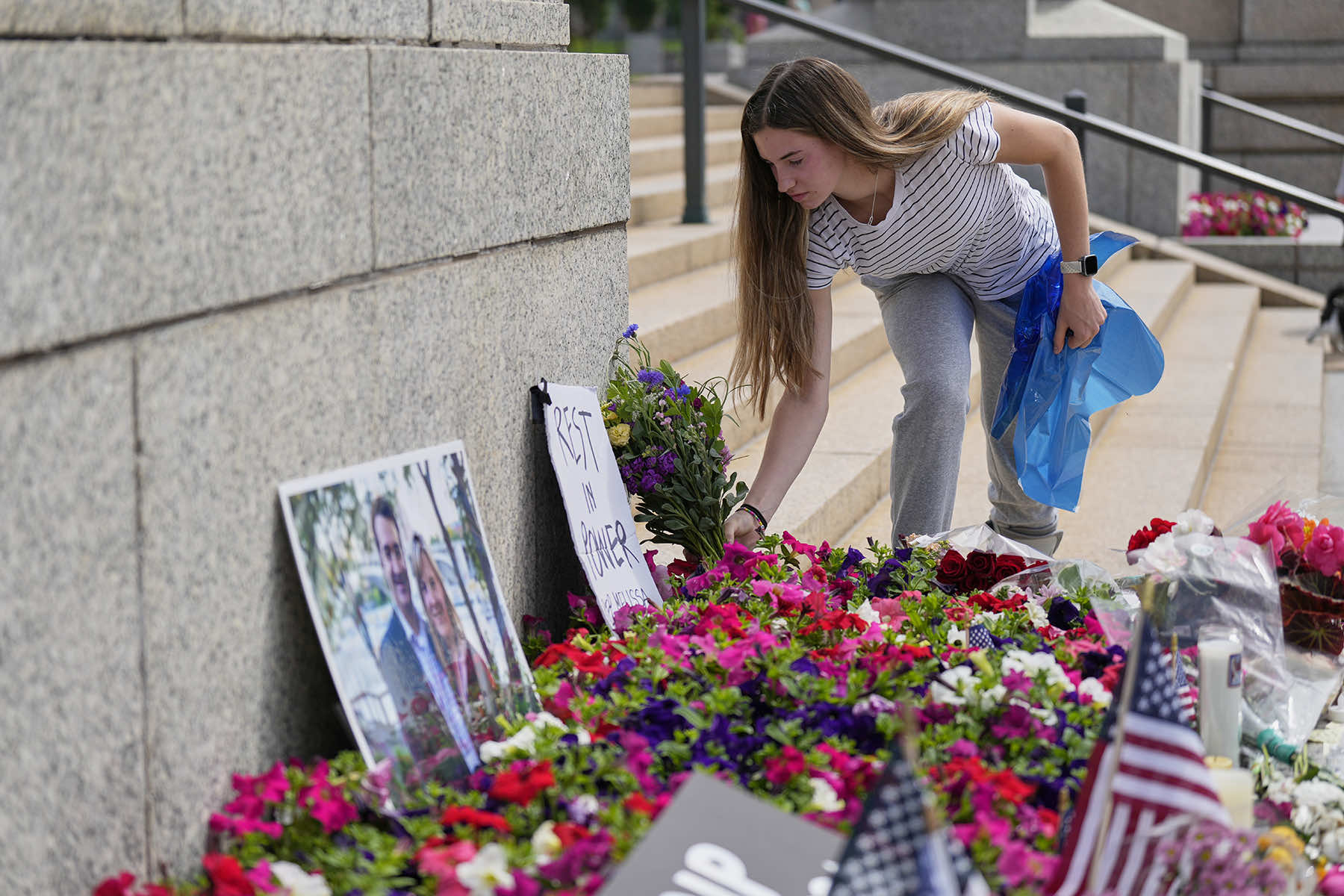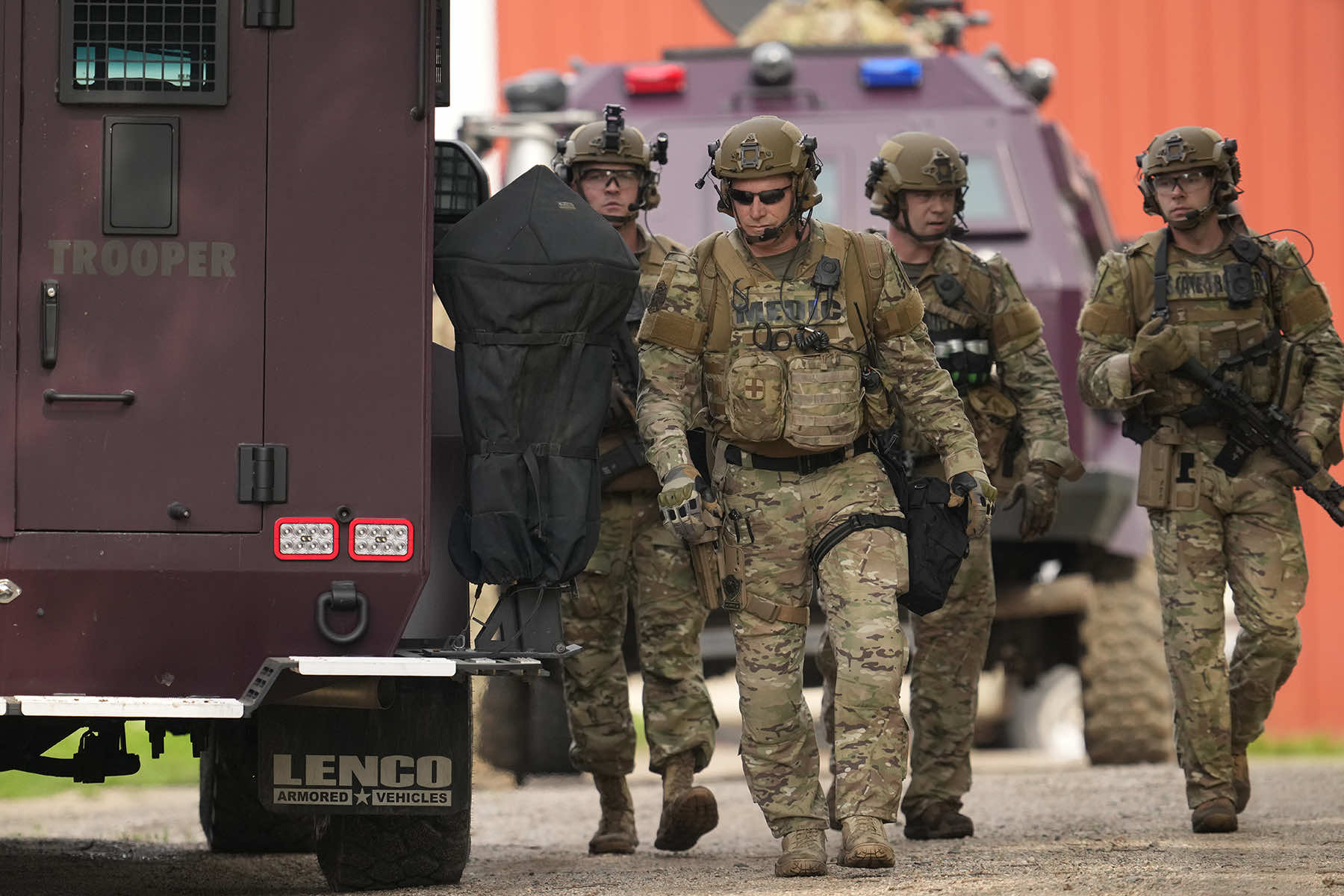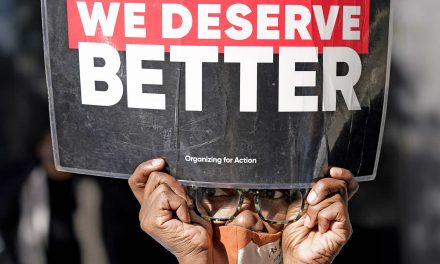
The man accused of killing a Minnesota lawmaker and wounding another went to the homes of two other lawmakers to carry out more carnage on the night of the shootings, a federal prosecutor said.
But one of the other lawmakers was not home, and the suspect left the other house after police arrived, acting U.S. Attorney Joseph Thompson said at a press conference on June 16.
The suspect, Vance Boelter, surrendered to police on June 15 after they found him in the woods near his home following a massive manhunt that began early on June 14 near Minneapolis. He is accused of posing as a police officer and fatally shooting former Democratic House Speaker Melissa Hortman and her husband, Mark, in their home early on June 14 in the northern Minneapolis suburbs.
Authorities say he also shot Senator John Hoffman, a Democrat, and his wife, Yvette. They were injured at their residence, about 9 miles away. The 57-year-old Boelter was charged with federal murder and stalking offenses. He already faces state charges, including murder and attempted murder.
“Boelter planned his attack carefully” by researching his intended victims and their families and conducting surveillance of their homes and taking notes, Thompson said.
Thompson said it was too early to say if the Justice Department would seek the death penalty, but noted that that was among the options available to the government based on the charges. The counts charged in the criminal complaint could be amended by prosecutors as they pursue a grand jury indictment as a prerequisite for bringing the case to trial.
Authorities declined to name the two other elected officials whom Boelter allegedly stalked but who escaped harm. But it was clear the shootings were politically motivated, they said.
“This was a targeted attack against individuals who answered the call to public service,” said Alvin Winston, the special agent in charge of the FBI’s Minneapolis field office. The resulting search, he said, was the largest manhunt in the history of the state.
Boelter’s wife consented to a search of her phone by law enforcement, according to an FBI affidavit that cites a text from Boelter to a family group chat: “Dad went to war last night … I don’t wanna say more because I don’t wanna implicate anybody.”
Earlier, the search for Boelter was the “largest manhunt in the state’s history,” Brooklyn Park Police Chief Mark Bruley said. It began when Brooklyn Park officers went to check on Hortman’s home and saw her husband gunned down before the shooter fled.
Authorities on June 15 spotted a vehicle Boelter had been using abandoned in rural Sibley County, where he lived, and a police officer reported that he believed he saw Boelter running into the woods, Bruley said. Police called in 20 different tactical teams, divvying up the area and searching for him.
During the search, police said they confirmed someone was in the woods and searched for hours, using a helicopter and officers on foot, until they found Boelter. He gave himself up to police, crawling out to officers in the woods before he was handcuffed and taken into custody in a field, authorities said.
Boelter gave up after being surrounded by police on the ground and in the air, said Drew Evans, superintendent of the Minnesota Bureau of Criminal Apprehension.
Jail records show Boelter was booked into the Hennepin County Jail early on June 16 and included two mug shots of Boelter wearing an orange prison shirt.
A TARGETED ATTACK
Drew Evans, superintendent of the state Bureau of Criminal Apprehension, said the violence likely would have continued had Brooklyn Park officers not checked on Hortman’s home, causing Boelter to flee.
The Hoffmans were attacked first at their home in Champlin early on June 14. A criminal complaint unsealed after Boelter’s arrest indicated their adult daughter called 911 to say a masked person had come to the door and shot her parents.
After police in nearby Brooklyn Park learned that a lawmaker had been shot, they sent patrol officers to check on the Hortmans’ home.
Brooklyn Park police officers arrived just in time to see Boelter shoot Mark Hortman through the open door of the home and exchange gunfire with Boelter, who fled into the home before escaping, the complaint said. Melissa Hortman was found dead inside, according to the document.
Authorities said Boelter posed as a police officer, even allegedly altering a vehicle to make it look like a police car. A Minnesota lawmaker said that Hortman’s dog had to be euthanized after being shot in the attack.
“Her children had to put down him after learning their parents had been murdered, ” Rep. Erin Koegel posted on the social media platform X. “Gilbert wasn’t going to survive. Melissa loved that dog. She trained him as a service dog. He flunked out of school and she was so happy he failed so he could stay!”
NO DETAILS ON MOTIVE
Authorities did not give a motive for the shootings as they announced Boelter’s arrest. But the details surrounding Boelter’s actions, background, and targets reflect a larger pattern. His behavior and ideology align with the outcomes long warned of by scholars, journalists, and watchdogs tracking the rise of right-wing political extremism in the United States.
Given Boelter’s evangelical background, documented opposition to abortion, and the targeted nature of his violence against Democratic lawmakers known for supporting reproductive rights, the attack fits the profile of politically motivated violence shaped by Christian Nationalism.
For more than a decade, Donald Trump, Republican leaders, and their MAGA supporters have cultivated a movement that merges religious absolutism with political grievance, casting opponents not just as rivals but as enemies of the country and threats to moral order.
Within that framework, policy disagreement has become spiritual warfare, and political figures are portrayed as agents of sin. It is in this environment that individuals like Boelter have been immersed. Not only through partisan rhetoric, but through a broader ecosystem of media, churches, and community networks that often frame political violence as justified.
While Boelter’s public remarks are limited, his opposition to abortion and alignment with Republican politics are well documented, and multiple reports confirmed his participation in Trump rallies and conservative religious activism.
His views did not develop in isolation. They were sharpened over years in a culture where masculinity, nationalism, and Christian identity are fused into a singular political identity that presents Democratic governance as both illegitimate and evil.
That ideological mix mirrors the rhetoric pushed by far-right lawmakers, movement conservatives, and religious political operatives across the Trump era. The message has remained consistent, saying Democrats are a threat to America’s future, and anyone who defends abortion rights or diversity efforts is complicit in destroying the country.
A list of about 70 names was found in writings recovered from the fake police vehicle at the crime scene, said two law enforcement officials who spoke on condition of anonymity because they were not authorized to discuss details of the ongoing investigation.
The writings and list of names included prominent state and federal lawmakers and community leaders, along with abortion rights advocates and information about health care facilities, according to the officials.
A Minnesota official said lawmakers who had been outspoken in favor of abortion rights were on the list. The official also spoke on the condition of anonymity because the investigation was ongoing.
Boelter is a former political appointee who served on the same state workforce development board as Hoffman, records show, though it was not clear if or how well they knew each other.
Just hours after the shootings, Boelter texted friends to apologize for his actions, though he didn’t say what he had done.
“I’m going to be gone for a while. May be dead shortly, so I just want to let you know I love you guys both and I wish it hadn’t gone this way,” he wrote in messages.
AN ESCALATION IN POLITICAL VIOLENCE
The shootings come as political leaders nationwide, predominantly in the Democratic Party, have been attacked, harassed, and intimidated amid deep political divisions. Lawmakers said they were disturbed by the attacks as Twin Cities residents mourned.
On June 15, U.S. Senator Amy Klobuchar shared a statement from Yvette Hoffman expressing appreciation for the outpouring of public support.
“John is enduring many surgeries right now and is closer every hour to being out of the woods,” Yvette Hoffman said in a text that Klobuchar posted on social media. “He took 9 bullet hits. I took 8, and we are both incredibly lucky to be alive. We are gutted and devastated by the loss of Melissa and Mark.”
Brightly colored flowers and small American flags were placed on the gray marbled stone of the Minnesota State Capitol along with a photo of the Hortmans after what Governor Tim Walz called “a politically motivated assassination.”
Pam Stein came with flowers and knelt by the memorial. An emotional Stein called Hortman an “absolute powerhouse” and “the real unsung hero of Minnesota government.”















